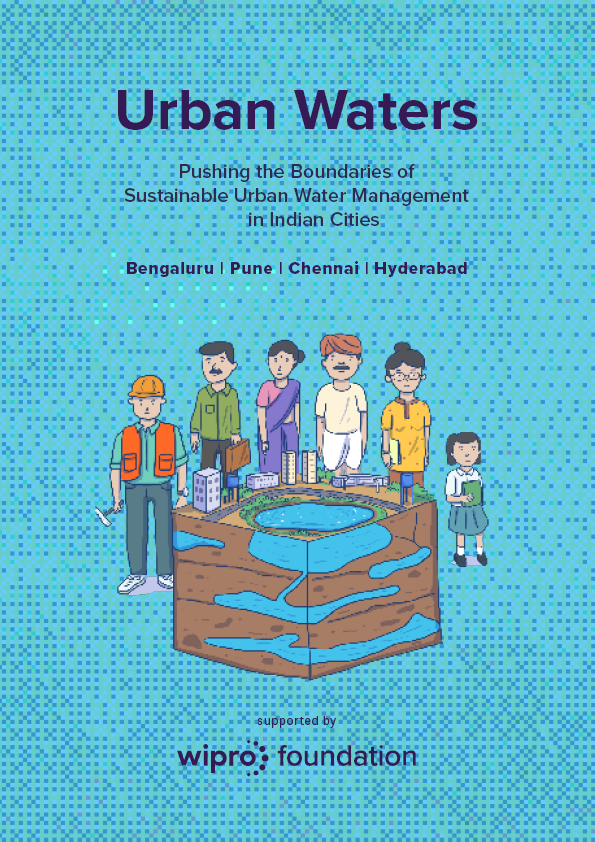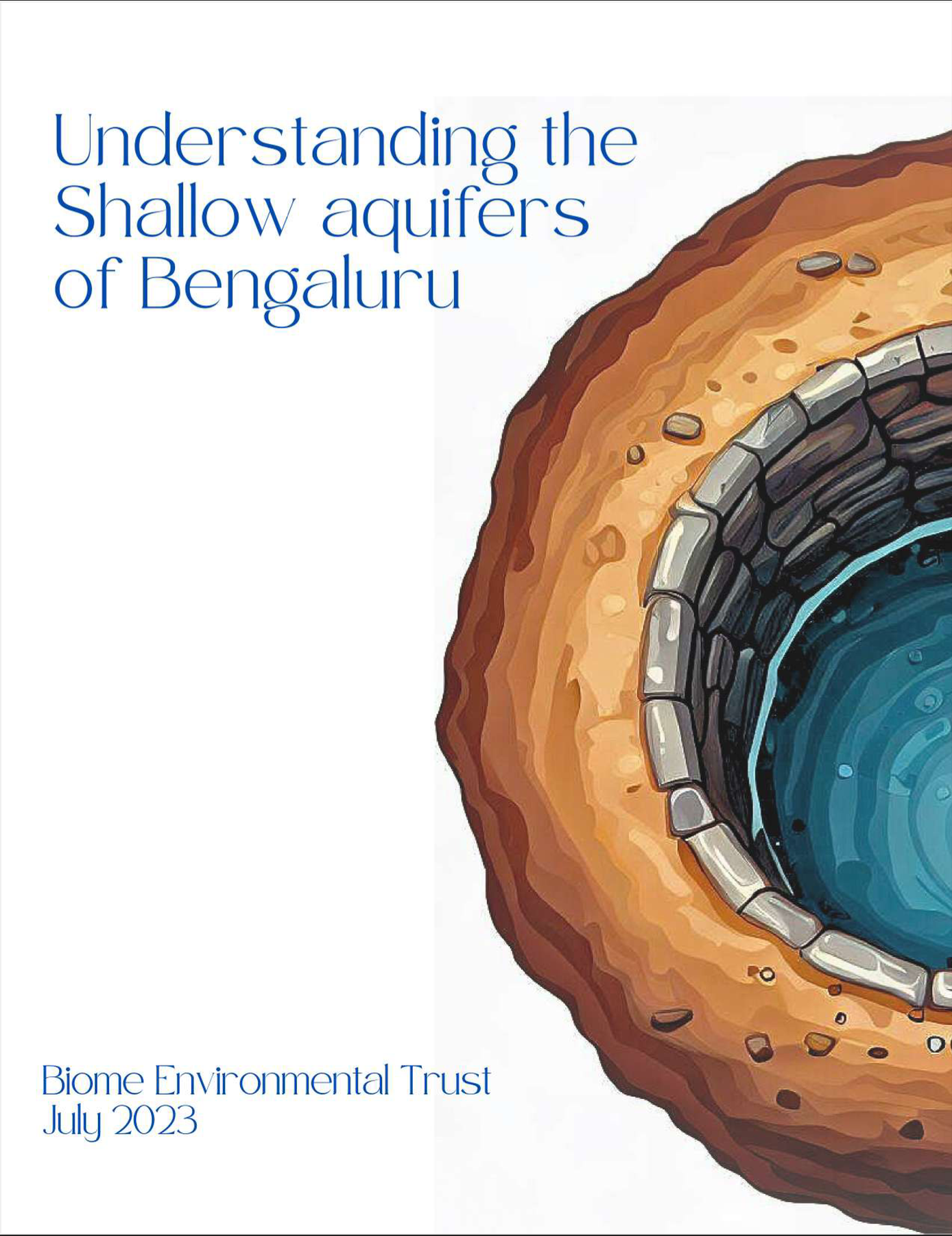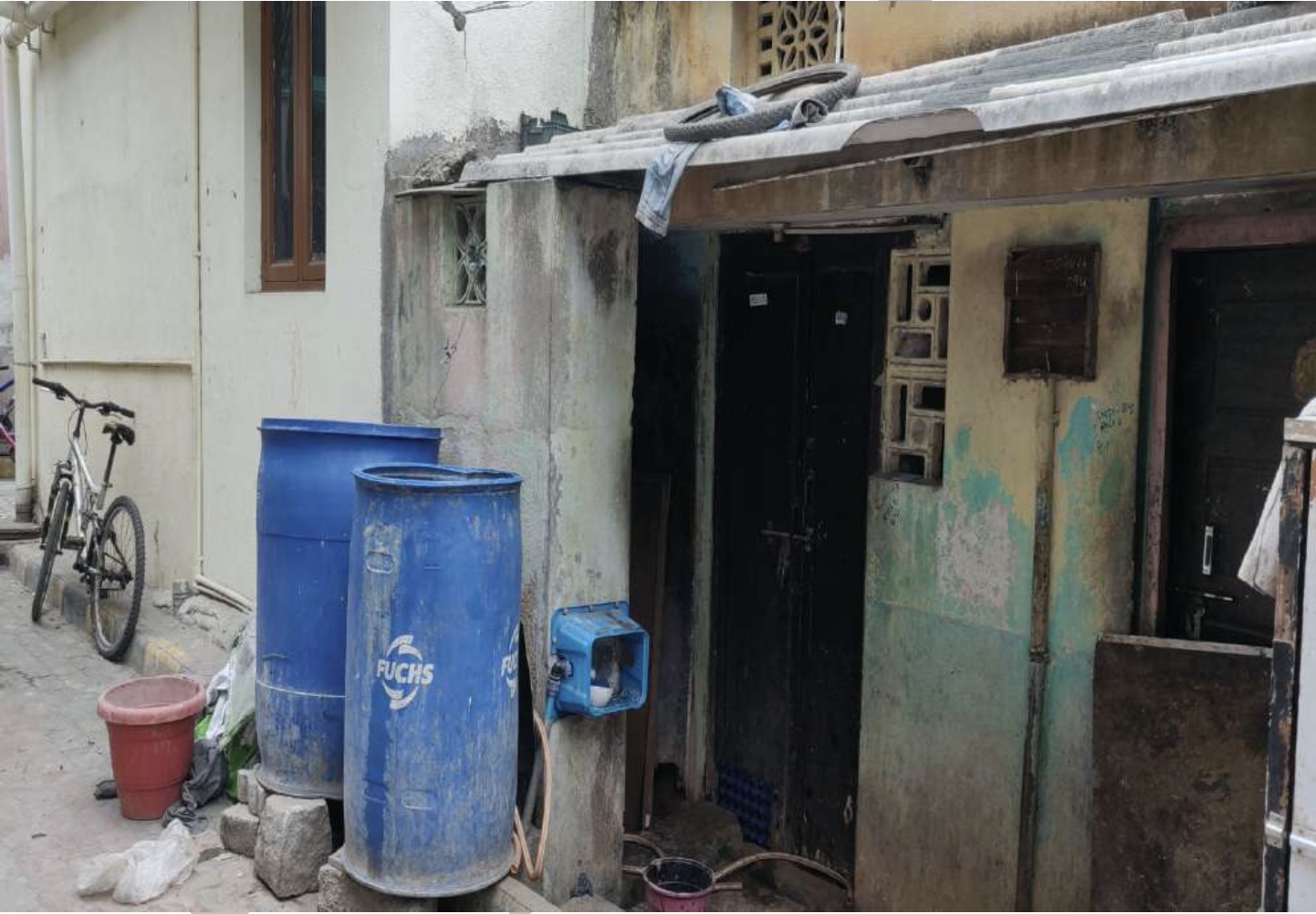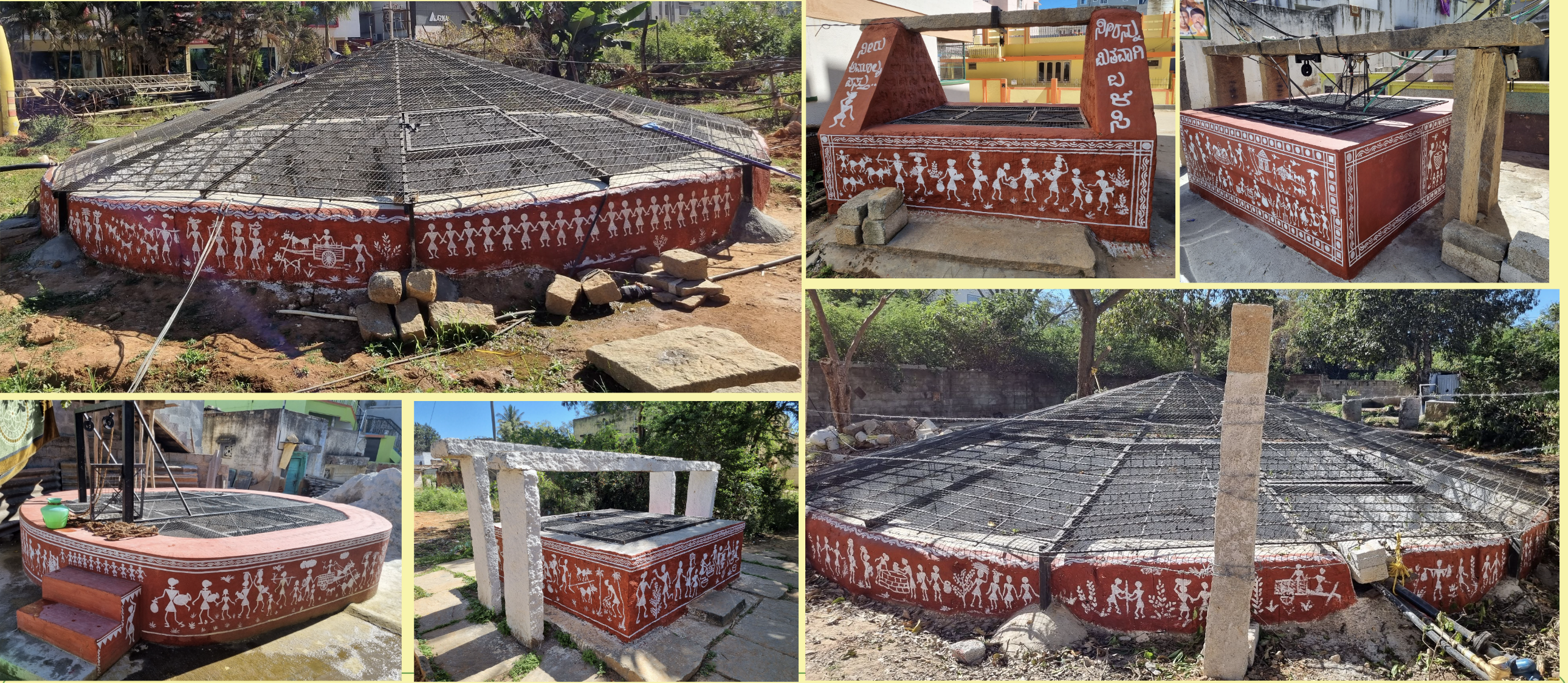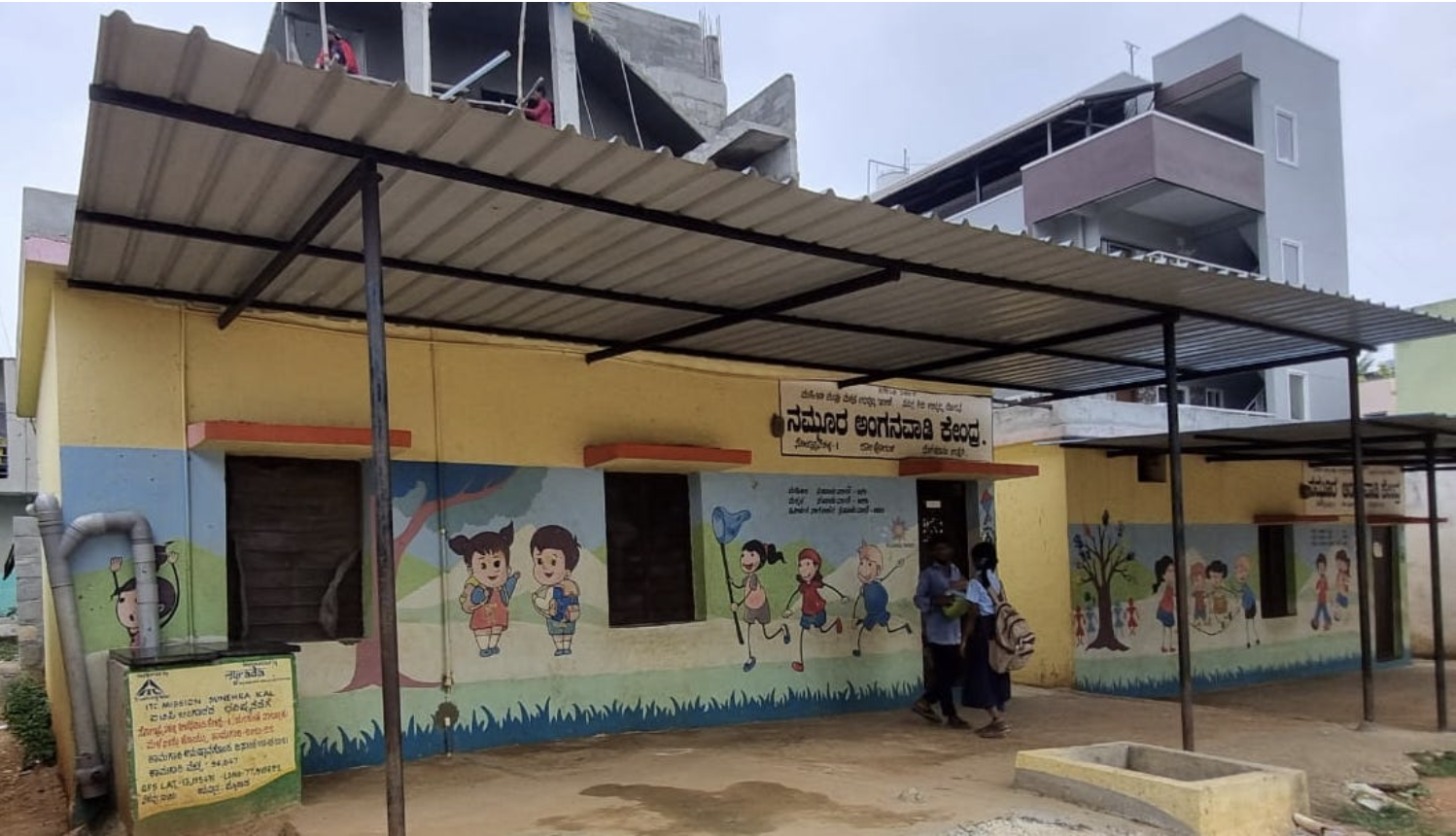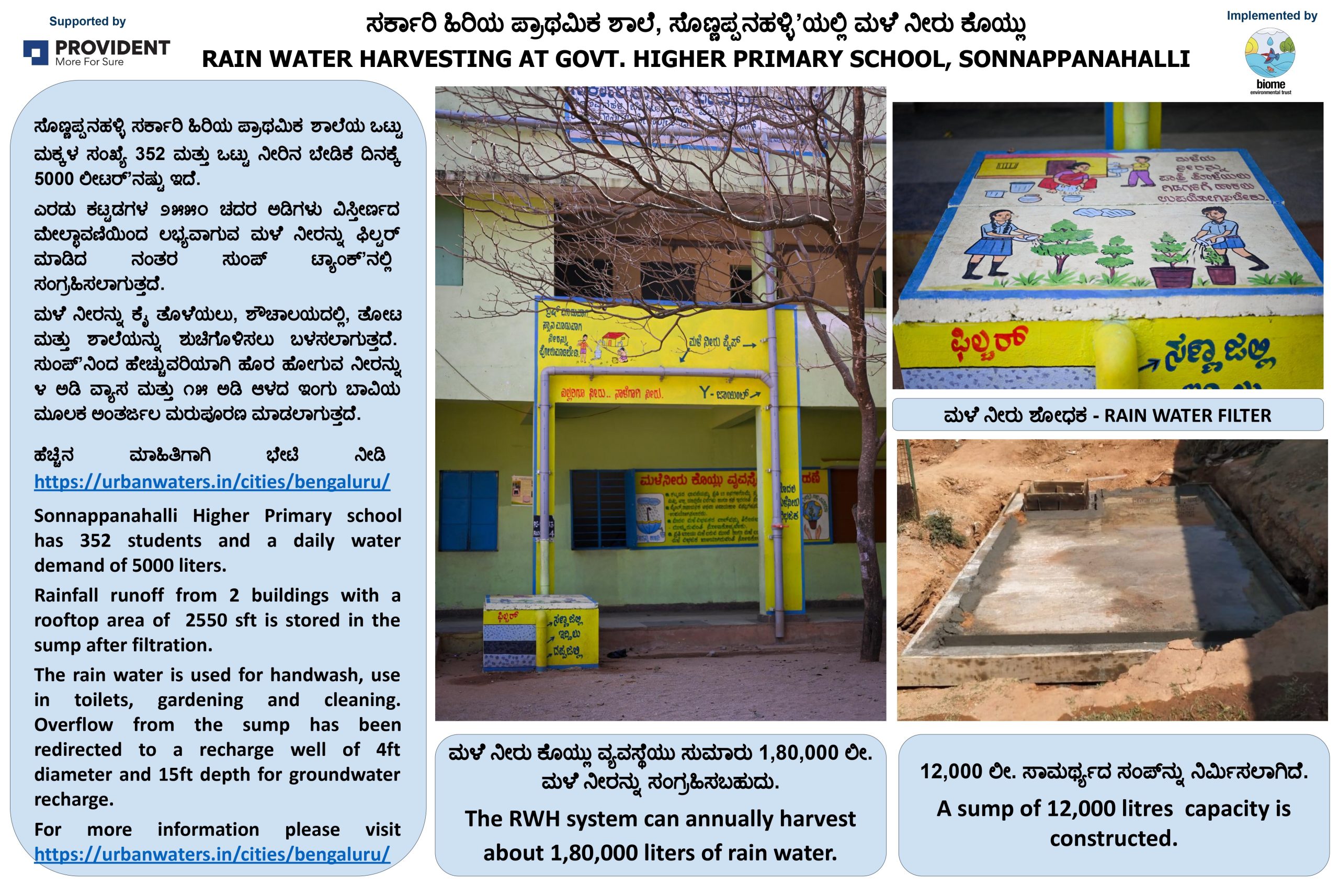Rainwater harvesting In Vidyaranyapura
Vidyaranyapura, a locality in North Bengaluru, is surrounded by multiple lakes, but as the area got urbanised, the lakes dried up. However, the groundwater table in many areas is very high, as close as 5ft from the ground level, and digging an open well in one’s property has long been a norm. Many households in the area implemented good water management practices like rooftop rainwater harvesting and groundwater recharge through recharge wells. Here are the stories of three such houses.
Raghuram Giridhar’s house
Raghuram Giridhar has a two-story house supplied by an open well of 18 ft depth and 3 ft width, BWSSB’s piped Cauvery water, and a rooftop rainwater harvesting (RWH) system whose water is stored in a 12 KL sump. The water requirement for his household is 30,000 litres a month, or 125 LPCD (litres per person per day). The details of the interventions are in the table below.


Open well (left) and rainwater storage sump (right)
Sham Prasad’s house
Sham Prasad’s house in Doddabommasandra, Vidyaranyapura, requires 40,000 litres of water a month or 167 LPCD. The house is supplied by BWSSB’s piped Cauvery water, a borewell on the property, and a rooftop rainwater harvesting system connected to a recharge well to keep the borewell working. The details of the interventions are in the table below.


First rain separator (left) and recharge well (right)
Kamesh Mahadevan’s house
Shri Kamesh Mahadevan’s house in Vidyaranyapura uses 27KL of BWSSB’s piped Cauvery water with a per capita water consumption of 300 LPCD. The house has an open well which dries up in the non-rainy months, and a rooftop rainwater harvesting system that feeds the well. It is hoped that as more water percolates into the well, the water table will rise, and the well will hold water for longer periods.


Kamesh Mahadevan’s well
Rainwater harvesting potential and cost of different types of water
The table provides details of the rainwater harvesting potential for the three houses.
|
Rainwater harvesting potential |
|||||
|
Name of house owner |
Catchment type |
Area (sqm) |
Runoff generated from one 30 mm rain |
Annual runoff at 974.5 mm rainfall |
Use of harvested rainwater |
|
Shri Raghuram Giridhar |
Rooftop |
139 |
3.8 KL |
121.8 KL |
Rooftop rainwater stored in a 12 KL sump – overflow goes to well – water used for all non-potable uses |
|
Shri Sham Prasad |
Rooftop |
111.48 |
3 KL |
97 KL |
Stored in 4.5 KL sump – overflow goes to RW |
|
Surface runoff |
260 |
5 KL |
177 KL |
Goes into recharge well (RW) that helps recharge borewell |
|
|
Shri Kamesh Mahadevan |
Rooftop |
46 |
1.2 KL |
40 KL |
Goes into open well – plan to use it once well starts holding water |
The table provides the cost of water based on the source.
|
Production cost of water based on sources |
||
|
House |
Source |
Cost per KL (Rs) |
|
Raghuram Giridhar |
Cauvery water without sanitation cess |
32 |
|
Cauvery water with sanitation cess |
38 |
|
|
Open well water |
7 |
|
|
Pumping charges per KL |
1.10 |
|
|
Sham Prasad |
Cauvery water without sanitation cess |
33 |
|
Cauvery water with sanitation cess |
36 |
|
|
Borewell water |
103 |
|
|
Pumping charges per KL |
1.10 |
|
Here is the detailed case study, and a video of Raghuram Giridhar talking about the water management interventions at his house.


